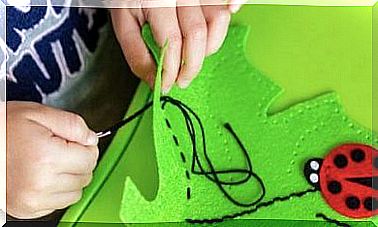Understanding In The Classroom: Verification Techniques

One of the basic goals of the school is to make sure students learn things. In order for teachers to be able to assess whether students understand the material being taught, there are some useful strategies for testing comprehension in the classroom.
With these strategies, teachers do not have to sit with their fingers crossed while waiting for their students’ test results. Instead, they know in advance if they have done their job properly and if the students have understood the material properly.
Normally, the problem is due to the use of tests and exams to test students’ understanding when the material has already been completed. Regardless of the result, teachers must move forward in the curriculum.
Few teachers have enough time to focus on students’ weaknesses and misunderstandings until after the tests are over. Then it is too late and the students may lose interest.
To reach students, it is not enough just to explain things in a good way. You need to keep a close eye on what they actually understand. When questions arise, or even if a student frowns a little, you must be able to react immediately to the situation.

Here are some helpful verification strategies to maximize classroom understanding:
Avoid “yes and no” questions
It is important not to ask the class questions that can only be answered with a “yes” or “no”. You should also avoid open-ended questions such as “Did everyone understand?” “Yes.”
Therefore, when students later admit that they are not keeping up, the teacher is often surprised. To avoid this and ensure that students understand the material , you need to ask very specific questions that require them to use their newly acquired knowledge.
Understanding in the classroom: Ask students to reflect
This means asking students to take the last five minutes of the lesson to reflect on the topic being covered and write down a few lines about what they learned during the lesson. Then collect these written reflections and read them.
In addition, you can let them explain how they would apply certain themes, concepts or skills they learned in the classroom in a practical environment.
Use hand signals
Another option for verifying the understanding in the classroom, or the lack of it, is to use predetermined hand signals to rate the understanding of the covered material. This strategy requires commitment from all students and allows the teacher to assess a large group’s level of understanding.
For example, you can create hand signals where students hold up all the fingers, a few fingers, or just one finger. They should show five fingers when they think they have fully understood the material, with the scale down to one finger, which indicates minimal understanding.
Understanding signs
With this method, students create comprehension signs that they will use throughout the course. They should use the materials they have available (individual blackboards, cards, sheets of paper) or permanent posters with possible answers that they can put up.
With the help of these, the teacher can easily check the individual student’s understanding when the group shows their signs. These can be, for example, a green sign indicating that he or she has understood everything, orange to indicate that he or she has understood in part and red to indicate that the student needs more help.

Understanding in the classroom: Socratic conversations
Socratic conversation is a technique that consists of exploring ideas in an open dialogue between students. The teachers base the seminars on reading and analyzing a specific text. They can also apply this technique using an image, a piece of music or a video.
The students then ask each other questions about an important topic related to the selected text, image or song. These questions open up a conversation that leads to further questions and answers.
As a result, students learn to ask questions that lead to more specific questions to facilitate their own discussion. This allows them to gain a new understanding of the subject.
In summary, the most effective way to verify comprehension in the classroom is to do so while the material is being taught. Asking students to write samples of already covered material and later try to deal with misunderstandings and gaps does not work. The students have already moved on.









